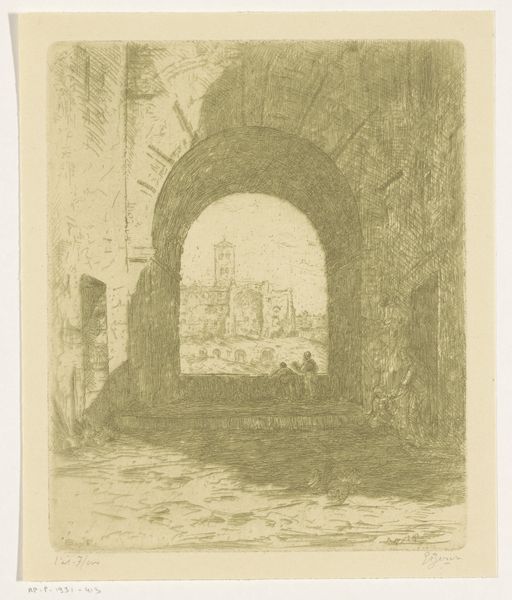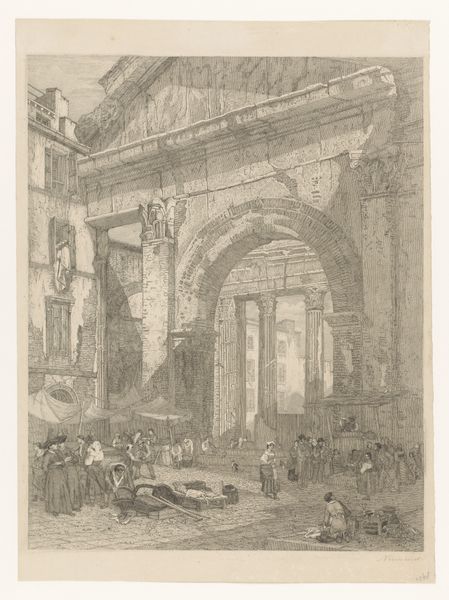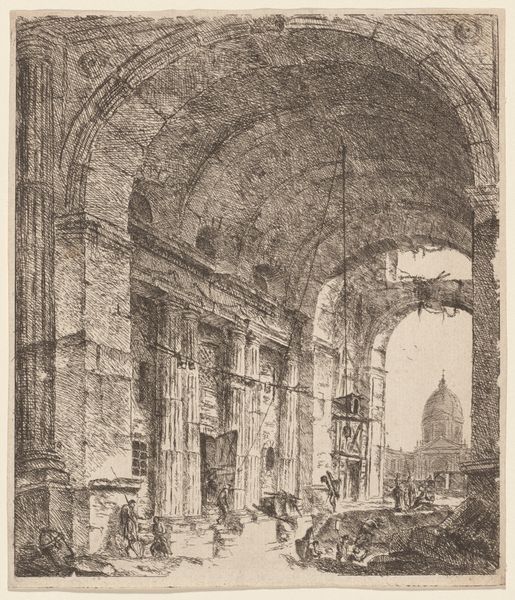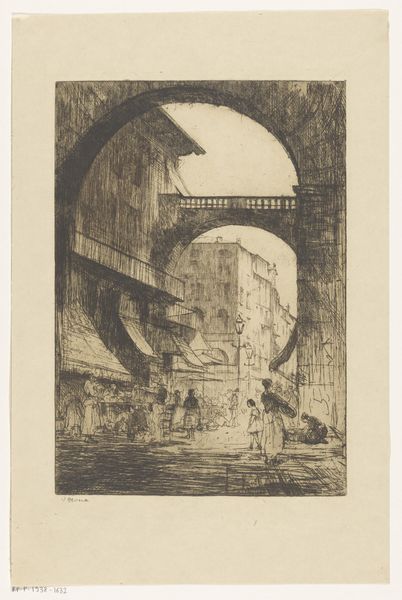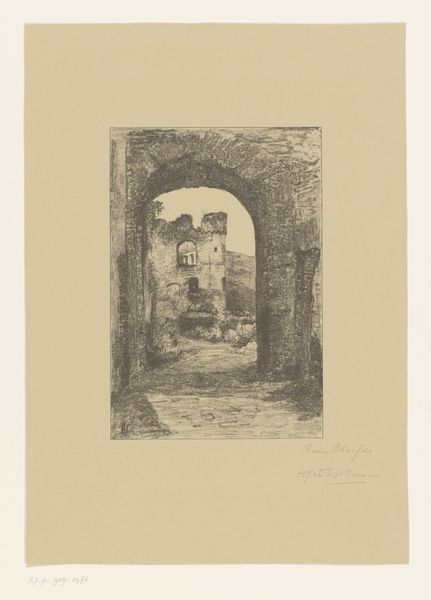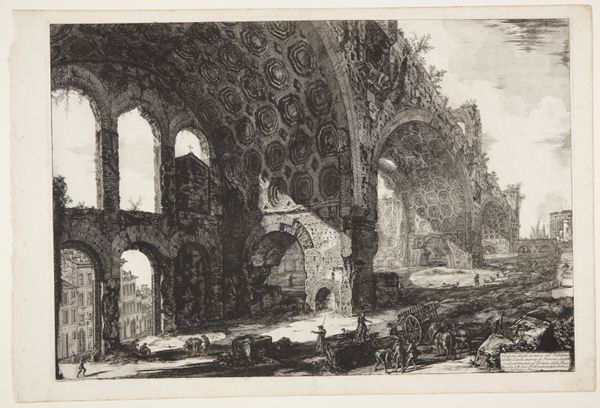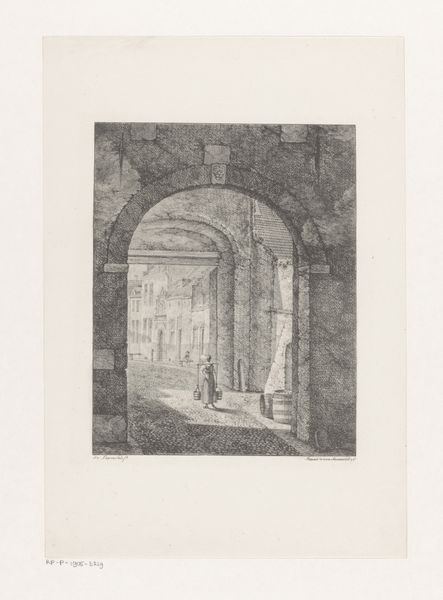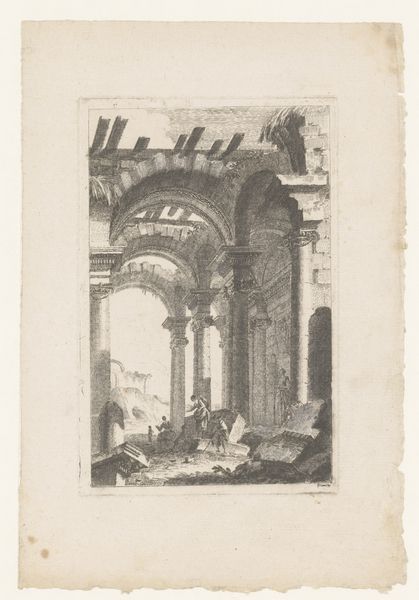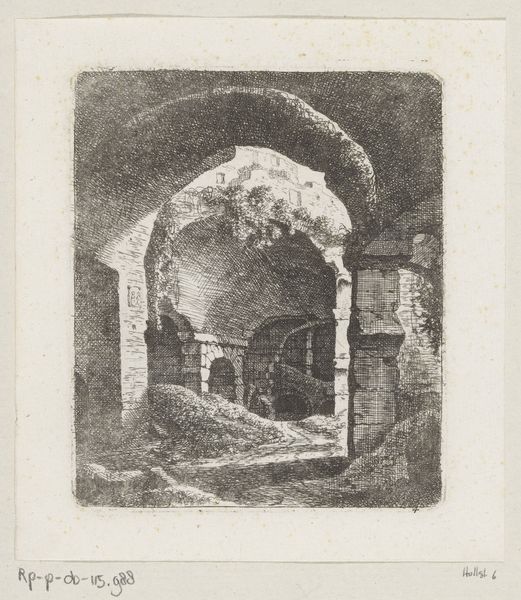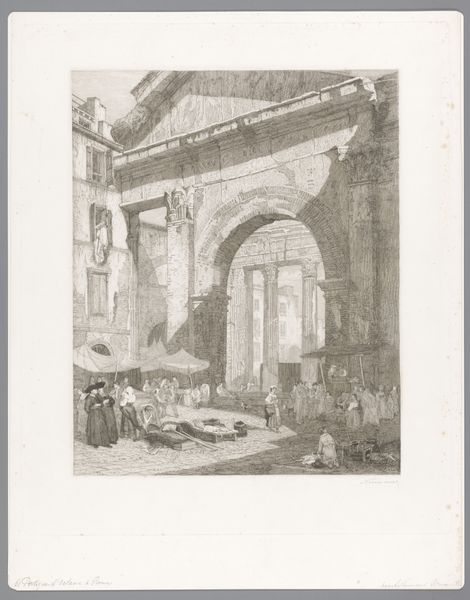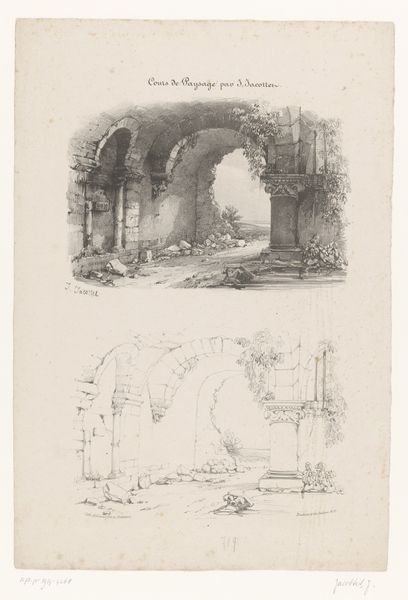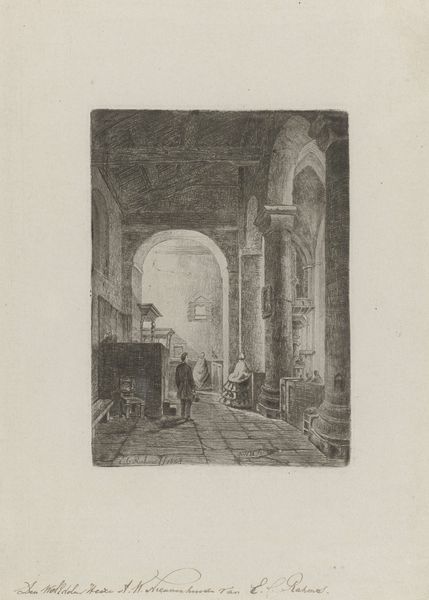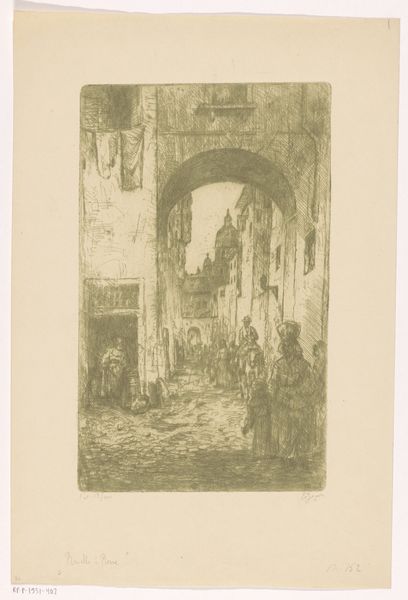
print, etching
# print
#
etching
#
old engraving style
#
landscape
#
form
#
romanesque
#
line
#
cityscape
Dimensions: height 249 mm, width 139 mm, height 274 mm, width 163 mm
Copyright: Rijks Museum: Open Domain
Curator: This is "Palatijnsche ruïne in Rome," an etching created by Etienne Bosch before 1931. My initial reaction is awe; the architecture, though in ruins, possesses such compelling strength and grandeur. Editor: Indeed. The formal qualities immediately stand out. Observe how Bosch uses line to define the imposing arches and the textured surfaces of the stone. The composition is cleverly structured to draw the eye into the distance, creating depth. Curator: It evokes the feeling of Romanticism, a wistful nostalgia for the past. How does the context of its production illuminate Bosch's choice of subject? Were ruins a popular motif at the time, representing perhaps the decline of empires or the transience of human achievement? Editor: The repetition of the arch form, each diminishing in size as it recedes, functions almost as a visual echo of history itself. The light source appears to come from beyond those arches. What impact does this play of light have, structurally speaking? Curator: The etching medium itself is historically relevant. The relative ease of its dissemination contributed to the popularization of these types of views for mass consumption. Remember, art wasn’t always accessible as it is today, even representations of it. This type of imagery played a crucial role in constructing narratives about specific sites. Editor: Precisely, light shapes and contours, thus activating the forms. And as for medium, observe how Bosch has masterfully controlled the etching process to create areas of rich darkness and delicate highlights. Semiotically, the ruin embodies absence, yet it paradoxically declares a palpable presence. Curator: This ruin carries immense symbolic weight, reflecting shifting societal and aesthetic priorities across epochs. We can understand its continued power through studying this lineage and unpacking its associations. It speaks volumes about how empires rise and crumble and how later generations interpret and repurpose their remains. Editor: Precisely. I now view the etching through both the physical traces within its lines, and a historical narrative, and both illuminate my experience of this image of a past's endurance. Curator: It gives me pause to ponder the relationship between impermanence and lasting impact.
Comments
No comments
Be the first to comment and join the conversation on the ultimate creative platform.
